If the Garden of Eden was in England then it would be here on the Dorset coast, in Abbotsbury. Exotic plants of emerald greens, golden yellows, and rusty reds hug the gnarled trunks of ancient oak and eucalyptus trees. A myriad of unseen birds chatter excitedly in the canopy overhead, busy pheasants shuffle and peck their way through tall clumps of bamboo and flamingo pink water lilies shimmer like meditating monks on rippling ponds. This is Abbotsbury Sub-Tropical Gardens, a vibrancy of diversified exotic beauty in a striking area of Dorset’s Jurassic coast
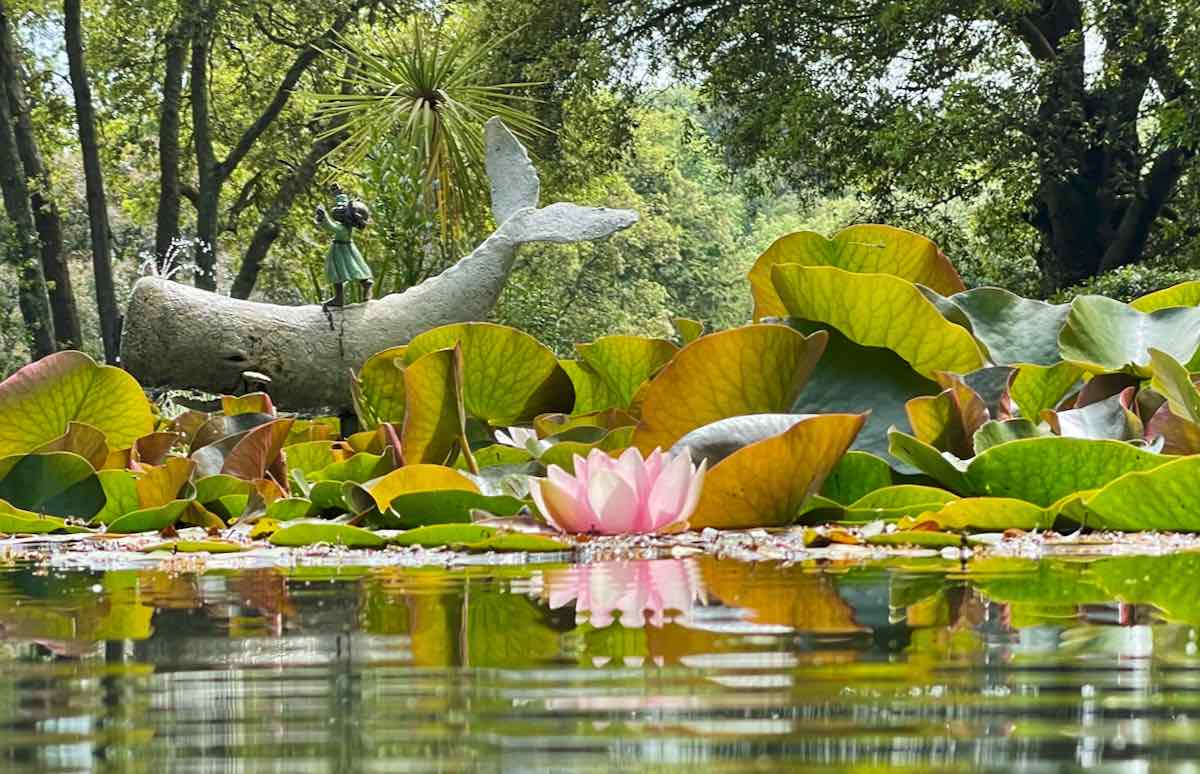
Firstly an admission. My wife is an avid amateur horticulturist. She truly believes I do her great favour allowing her to drag me resentfully, though obedient as a dutiful Labrador, around various collections of green things. So here I am again, strolling around another garden. Don’t tell her, I really enjoyed this visit to the Abbotsbury Subtropical Garden: the jungle-like surroundings, the myriad of vibrant colours and the buzz of insects. It almost felt like our COVID delayed trip to South Africa was finally taking place.
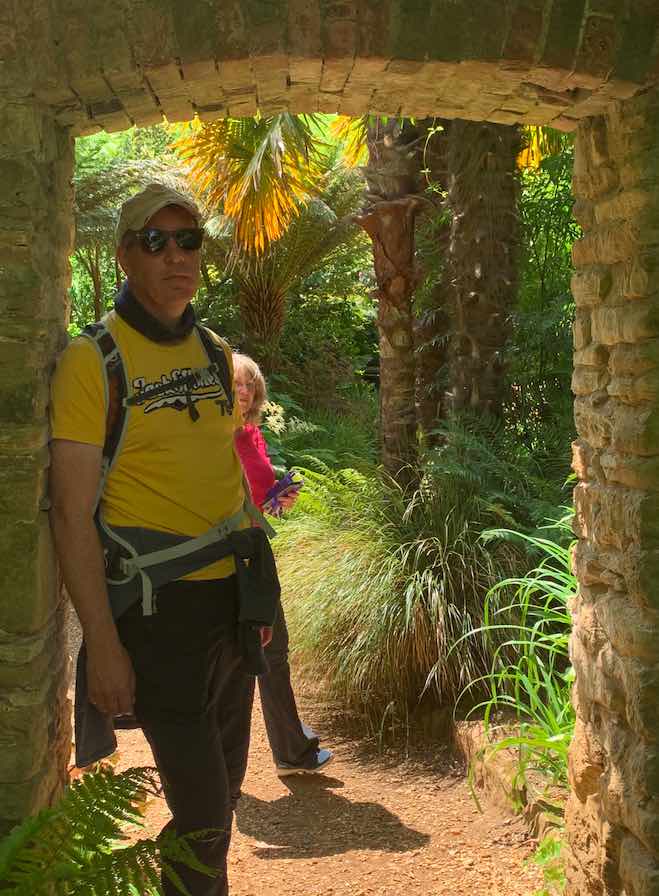
There are a few things that make these subtropical gardens, in this green agricultural valley on the hillside above Dorset’s Chesil Beach, special.
Firstly there are the unusual exotic flowers, gathered from hundreds of sub-tropical wildernesses around the world. And then there are the Jurassic Coast views, from the viewpoint at the end of the Magnolia Walk, the carefully co-ordinated planting and landscaping, as well as the imaginative sculptures of local artist Robert James almost hidden amongst the range of varied trails.
Abbotsbury has a long history. People have lived here since the earliest times, and evidence of Stone Age settlements from 6000 BC have been found in the area. In 44 AD the Romans built a mill nearby and in the early 600s Christianity came to England and the first chapel was built at Abbotsbury. The Benedictine Abbey was first built in 1044 and thrived until it was eventually dissolved by Henry VIII.
The gardens themselves were first enclosed by the 3rd Earl of Ilchester, Henry Fox-Strangeways, in 1808 and were initially planted as a woodland haven. It was the 4th Earl, William a diplomat in the foreign service and a respected botanist, who first began to introduce many of the species of plants from a wide range of countries he had explored, including Chile, the Canary Islands and the southern extremes of Africa.

Between the wars, economic difficulty resulted in the gardens being neglected. In World War 2 part of the West Lawn was even used as an encampment by the Dorset Light Infantry. However, in the late 1960s Lady Teresa Agnew and her husband introduced a programme of restoration, with the site being extended and new plants and species introduced. The great storm of 1987 caused severe damage, but in the 1990s another major restoration began and though still ongoing today has already resulted in a fascinating collection of exotic and unusual plants and flowers.
You could spend all day exploring the garden trails. They cover an area of more than 5 acres and include a captivating fusion of formal and informal gardens. As you would expect in a once-wooded enclosure, there are trees everywhere, some so old that they seem to whisper proudly as their leaves tremble in the breeze, extolling their compelling history to passers-by. And there are lots of birds. I spied a pair of rainbow feathered Golden Pheasants and heard the unmistakable call of an Australian Kookaburra, which though kept in an aviary added a special authenticity to the sub-tropical atmosphere with its rambunctious laughter. Harriers and Honey Buzzards glide overhead and, if you’re lucky enough, Red Kite and even Golden Eagles can occasionally be spotted.
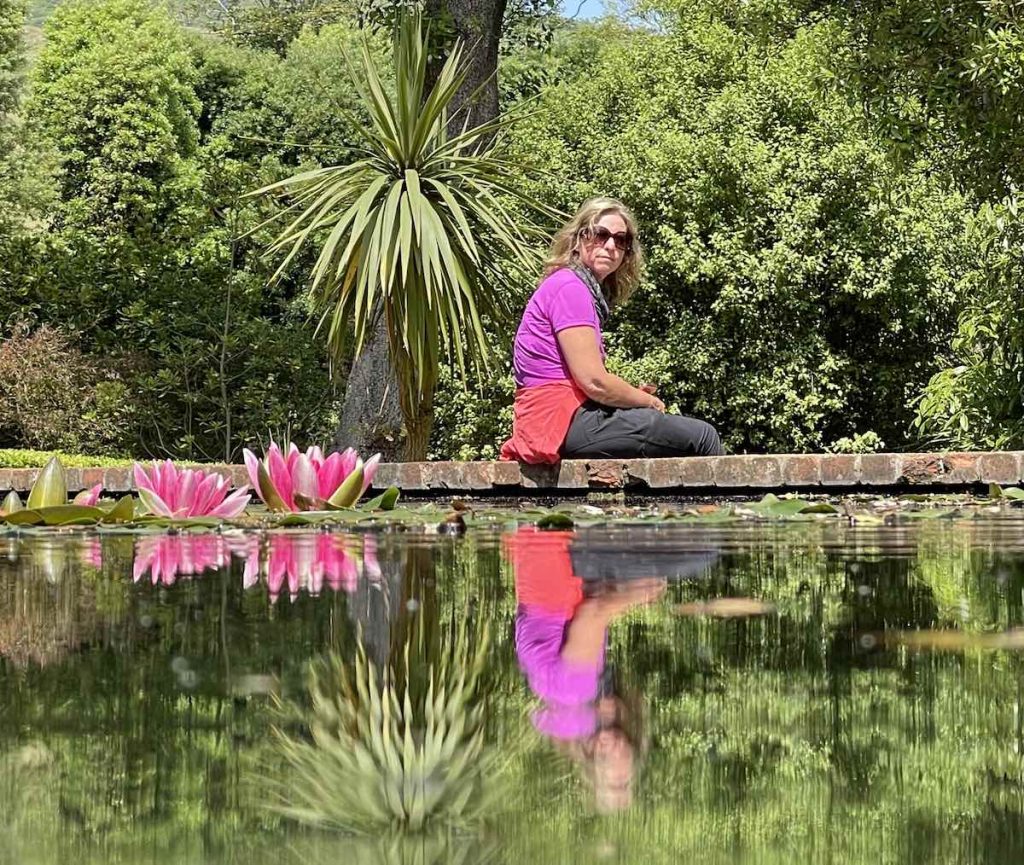 One of the garden’s highlights is the lush area beside the stream which winds its way through the gardens, its shaded waters decorated with ruby-red water lilies, its banks lined with impassable bamboo clusters, and vines hanging down from the canopy. The stream is crossed by brightly painted wooden footbridges, giving a feeling of having wandered into Monet’s garden at Giverny.
One of the garden’s highlights is the lush area beside the stream which winds its way through the gardens, its shaded waters decorated with ruby-red water lilies, its banks lined with impassable bamboo clusters, and vines hanging down from the canopy. The stream is crossed by brightly painted wooden footbridges, giving a feeling of having wandered into Monet’s garden at Giverny.
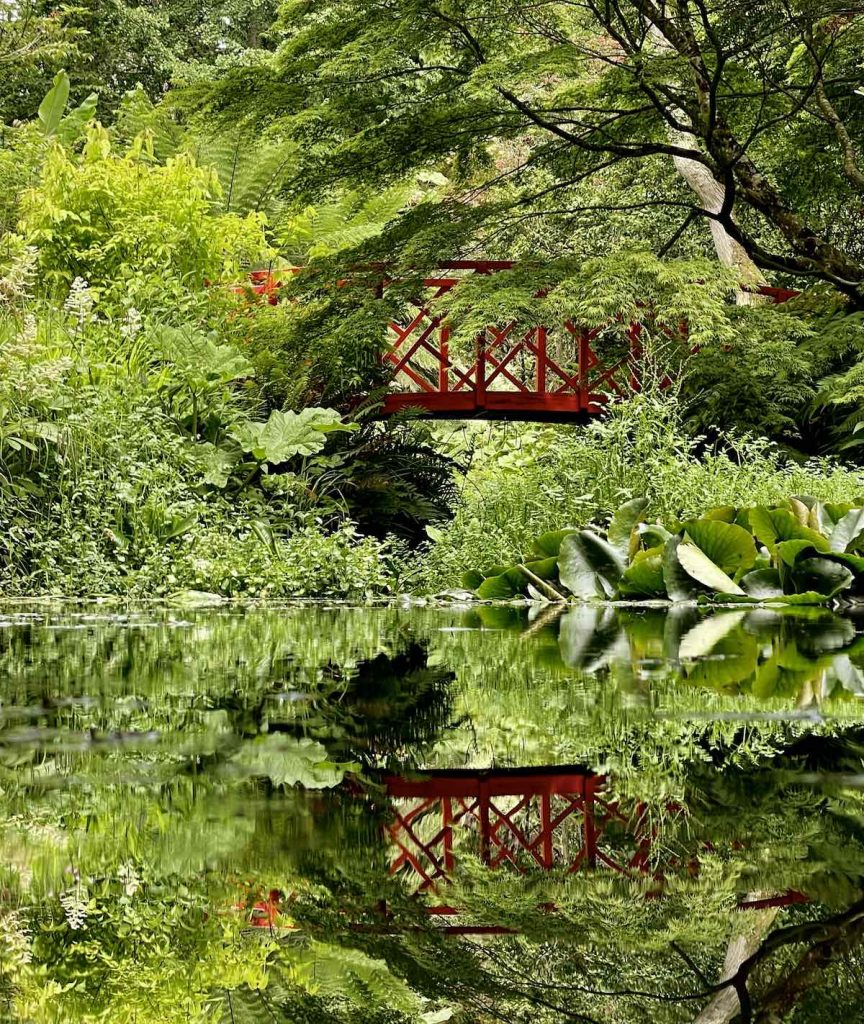
The gardens nestle in a valley, and the steep slope of the Magnolia Way dominates the Eastern bank of the site. If you are feeling energetic, there is a manicured lawn leading up to the top which will reward you with panoramic views of the Jurassic Coast and the globally unique phenomena of the Chesil Beach shingle spit stretching away to towards Portland in the distance.
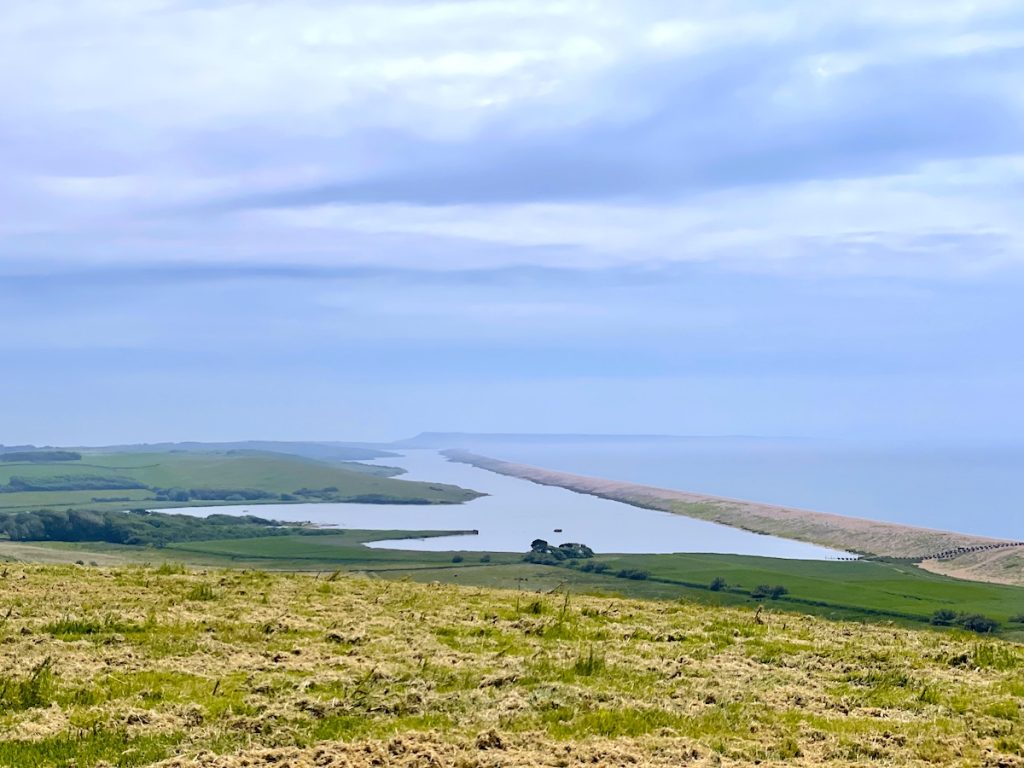
There is something for everyone amongst the different well-laid-out areas of the gardens, including an accessible trail. It’s possible to spend a good few hours wandering the main route, which is highlighted by highly visible painted arrows. There are also scores of narrow, serendipitous paths leading off into dense planting, promising new discoveries, pleasant surprises, and hidden, secluded havens where the tired walker can simply sit and contemplate.
The gardens enjoy their own private free car-park opposite the entrance which is around 200 metres down the narrow Cleverlawns road, just off the B3157 coast road, at the Western edge of Abbotsbury.
There is a fairly regular bus service that stops near the top of Cleverlawns and runs along the coast road between Weymouth and Lyme Regis.
You can extend your visit by continuing down the hill to the near-deserted beach, take a walk around the pretty town (where I can recommend the delicious pasties on offer at Bellenie’s Bakehouse), or visit the Abbotsbury Swannery.
See my posts on walking the Dorset coast for a place to stay.
The entrance fee for the garden is £10 per adult (concessions available) and at the moment, due to COVID-19, you must book in advance via their website. You need to book a one-hour arrival slot, but once inside you can stay as long as you wish.
There are toilets and a café on site.
Whilst you’re here, why not spend some time taking in the glorious seascapes from the cliffs and beaches of the SW Coast Path. Here’s an easy 6-mile walk from Burton Bradstock to West Bay to get you started.
Also please check out my other walks in Dorset and around the UK.
After travelling internationally on business for multiple decades, I have decided to take early retirement. I am now fulfilling two dreams. To travel more slowly and to write my own thriller novels.
| Cookie | Duration | Description |
|---|---|---|
| cookielawinfo-checkbox-analytics | 11 months | This cookie is set by GDPR Cookie Consent plugin. The cookie is used to store the user consent for the cookies in the category "Analytics". |
| cookielawinfo-checkbox-functional | 11 months | The cookie is set by GDPR cookie consent to record the user consent for the cookies in the category "Functional". |
| cookielawinfo-checkbox-necessary | 11 months | This cookie is set by GDPR Cookie Consent plugin. The cookies is used to store the user consent for the cookies in the category "Necessary". |
| cookielawinfo-checkbox-others | 11 months | This cookie is set by GDPR Cookie Consent plugin. The cookie is used to store the user consent for the cookies in the category "Other. |
| cookielawinfo-checkbox-performance | 11 months | This cookie is set by GDPR Cookie Consent plugin. The cookie is used to store the user consent for the cookies in the category "Performance". |
| viewed_cookie_policy | 11 months | The cookie is set by the GDPR Cookie Consent plugin and is used to store whether or not user has consented to the use of cookies. It does not store any personal data. |
